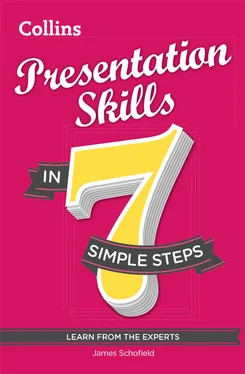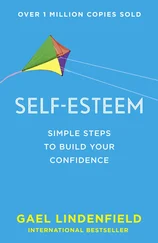Finding out where your audience comes from can be enormously important because you might need to adapt your message or style depending on their background. Supposing you had to present a recommendation to introduce new accounting software to different groups within a company, how might you need to change the focus of your talk? What things should you take into account?
Management will want to hear about the cost savings that it will generate. The technical side will likely be unimportant to them except for any risks caused by technical problems.
IT will want to be reassured by your description of its development that it fits into what they already have. They will be concerned about any difficulties that the new software may cause their servers.
Accounting staff will want to know if the software will make their work more accurate.
Sales people will expect you to sell something to them so they will be less interested in the development of the product and more interested in how it will make their lives easier.
This is just the beginning; you might need to present the topic to people who have just joined the company or students from a local business college. And of course, you might well have representatives from all these different groups in your audience. The point is, the more you know about their interests, the better able you are to tailor the presentation to them.
There’s an old saying: If you don’t know where you’re going, you’ll never get there . It’s essential to have a clear idea of what you want and what’s possible in the time available. Better to aim low and hit your target than be too ambitious and miss completely; so write down a sentence defining your goal: After my presentation, management can make a decision about whether or not to implement the proposed software .
Now test your goal to see whether it’s realistic by applying the SMART( Specific, Measurable, Attainable, Relevant, Timed) criteria to it. In the example above, the goal is:
Specific (decision on the software)
Measurable (a decision will be made)
Attainable (management can make the decision based on your information)
Relevant (a decision needs to be made)
Timed (after your presentation).
Once you’ve sorted out the parameters for your presentation, it’s time to look around for people or tools that can help you to get ready. Since you’re reading this book, you’ve already taken the first step in that direction – congratulations! But there are other things you can do to stack the odds in your favour.
Most people are willing to share their experience with less experienced presenters. Look for somebody who could act as a presentation mentor. It could be somebody you’ve seen giving a good presentation or it could be a co-worker whom you trust. Ask them to observe you doing a dry run of your presentation and to give you feedback. If possible, film it and watch it yourself to learn what can be improved.
Learning from the internet
The internet is full of information on every aspect of presentations, whether it’s the creation of visual aids or people giving live presentations. Some of these can be confusing rather than helpful but the TED Talks ( www.ted.com) are a good source of excellent presentations to watch. These short talks (3–20 minutes) are entertaining, interesting and some of the best real-life models of what you want to achieve.
Once you have these supporting elements in place, you can start getting together the material you need for your presentation. What should you be aware of?
It sounds obvious but the most important thing to remember about your choice of material is that it must be relevant. All of it. There’s always a temptation to include an unnecessary story or visual aid because it’s entertaining or interesting. Shoot these puppies right at the start of your preparation because if you allow them into your presentation, you will quickly get fond of them and they’ll be much harder to get rid of later when you realise you have a time problem. Everything you include must underpin the presentation goal that you set yourself before you get to this stage.
Again, this may sound obvious but are you sure that the information you’re presenting is correct? Have you considered points of view other than your own? Do your conclusions make sense? If you’re presenting a topic to a group of experts from your own field, you can guarantee that they’ll spot any inaccuracies in your claims. Make sure you can justify anything that you say.
There is an important reason why you need to be careful about quantity – your audience’s capacity to absorb what you have to say. We find it hard to remember the content of a presentation if there are too many distinct points in it. This means that ideally you should limit what you say to three main points. This isn’t always possible, but it’s very hard for your audience to process and retain more than four points.
So what do you do if you look at the material you’ve collected and you feel that your presentation needs more than just three points to get the desired concept across? You have to cluster your information into three to four key headings. Look at this example.
Subject:New software
Key points:faster processing of information, handles larger quantities of data, support from external consultants necessary, high costs of new licences, hardware update necessary to handle new software, staff training necessary for new software, complex company-wide rollout, better data security
These eight key points can be clustered under three distinct headings. For example:
New software advantages: faster processing of information, handles larger quantities of data, better data security
New software disadvantages: high costs of new licences, staff training necessary for new software, complex company-wide rollout
Recommendation: support from external consultants necessary, hardware update necessary
Your audience will remember the three headings from your presentation and if they want the details, they can check the handouts or a copy of the presentation that you can make available for them.
Once you’ve collected your material and clustered it under three main headings, you need to reduce each point under those headings into the essential information that you must be got across. For each point, create ‘must know’ statements and then turn each statement into key words. These key words will be very helpful later when you’re creating your presentation notes and your visual aids so it’s worth investing the time. Here are some examples.
New software advantages
| Must know: |
The data can be handled much faster by the new software . |
| Key words: |
Faster data processing |
| Must know: |
The new software will increase the degree of data security. |
| Key words: |
Data security increased |
New software disadvantages
| Must know: |
Staff will need to be trained on the new system . |
| Key words: |
Staff training necessary |
| Must know: |
The new software licences are expensive . |
| Key words: |
Cost of new licences |
Recommendation
Читать дальше












